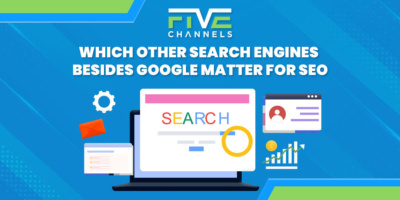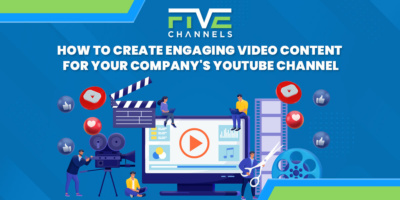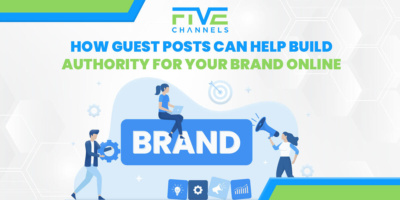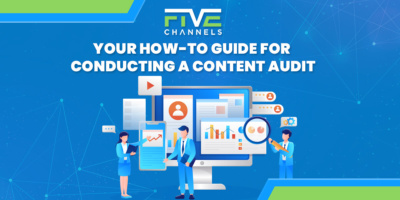Here’s something every business should be thinking about: Over 30% searches do not result in a click. People look up stuff and do not click on any of the suggestions Google gives them in these searches.
Why should you be thinking about this? Well, why wouldn’t you be? One-third of all searches looking for your business do not click on your website links in Google’s results. So, what are these people doing instead?
They’re reading your brand’s Knowledge Graph Panel, review site ratings, local map info, and more. Let’s look further into where these clicks are going and how you can still earn those visitors.
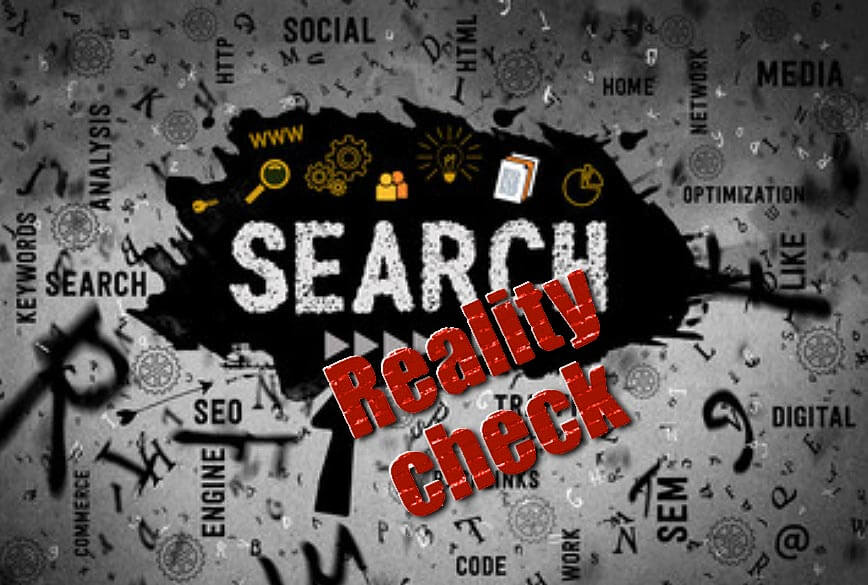

What is the Knowledge Graph Panel?
When you look for something on Google, especially a name (of anything), the results that Google shows contain a rectangular panel to the right of the first page containing key information about your search query.
For instance, you looked for a city, the so-called Knowledge Graph Panel or KGP would contain the city’s location, population, map, and something descriptive details with a few images.
This is what the KGP looked like when searched for President Thomas Jefferson.
A number of pointers are given in the panel presenting important facts about the former President and Founding Father of USA.
If you look for a business brand, you will find the Panel altering the information suitably, removing date of birth to include website, for instance. Maps, addresses, contact info, and reviews are also usually included.
The information a KGP gives is highly relevant to a Google user’s needs and they seem to prefer it over the search results Google provides on the rest of the page with direct links to websites and landing pages.
Why Should I Give Any Thought to the Google Results Page?
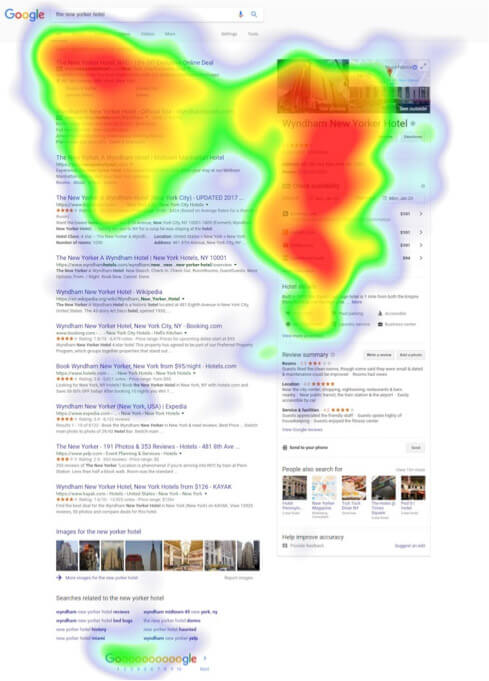
That’s all too well, but why should you as a business owner worry about the Graph at all?
Well, here’s why: In those one-third of the searches where users don’t click on your links, they’re reading the Knowledge Graph Panel instead, and they simply trust the information given there because it seems to be coming straight from Google. It is a big box full of snippets brimming with facts about your business.
A study conducted earlier this year studied the behavior of searchers looking for queries in the hospitality sector. The example heat map shows how users treated search results in comparison with the KGP given in their queries.
As can be seen, users hovered their mouse mostly either on the top left corner of the results, which is where the search text box and top Google results are. And just as much (if not more) on the KGP they were given.
With the KGP catching so much attention of the first results page and catching the eye of many of Google’s searchers, it becomes a significant resource for your business. People tend to use the information given on the KGP and take it home as facts about your business.
They also use this information to contact your business or drive up straight to your outlet, thanks to the contact information given on the panel.
The psychological effect of such an action is more engagement of the user with your business.
Wait. Let us explain that thought in a few more words.
The Low Funnel Actions of Google Users
Marketing is a complex study of a lot of things, one of which is customer behavior and psychology. The ways in which audiences are expected to respond to triggers are used for the benefit of businesses. Information is shared in advertisements to provoke audience reaction in a certain way.
So, when a Google user looking for a place to have lunch on-the-go, finds a few names around them in their Google app, manages to drive to the place they think might be okay without calling the restaurant for directions, and finds that the meal was to their liking – they’re bound to feel confident in their decision.
Feeling good about themselves and the experience they just had, they feel compelled to engage more with the service they just used. And how else will they do it except by using social media, sharing pictures of the place and their meal using superlatives about the taste of the food and their feelings of contentment at the point in time.
What does that business get? A new customer who loved their service and a big thumbs up on the customer’s social profiles where they share this experience with all of their friends.
And this is one of the major reasons why you should try to control your Knowledge Graph Panel as much as you can. The power of social relevance is immense on the Internet just as it is offline.
Google serves its audience, which is its Users looking for all kinds of things and businesses around them, and Google has long since learned what its Users say about businesses and products is more relevant to its other Users for obvious reasons.
The more Google Users say they love your business, the more of the remaining Google Users are bound to feel more confident buying from you, because user-generated content, such as direct reviews and testimonials come from other customers just like them. It’s naturally more reliable than paid ads. Recently, a study found that user-generated content (UGC) is the most trusted source of information about businesses when it comes to search engine users.
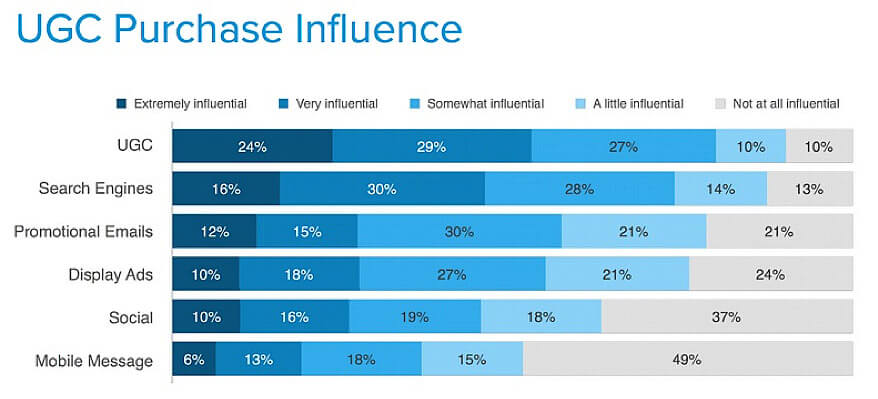
How Can I Control the Google Search Results Page?
So, now that you know what customers say about you on their (or your) social pages is important for the way other users and search engines perceive and rate your business, it becomes the natural next step that you try to steer the information on this page in your favor as much as possible.
A lot of you might be thinking how you could have any influence on Google’s results page at all? Especially when Google is so stringent about how it uses information about you to rank you in its algorithm and how people’s opinions affect it too.
Well, you may not have total control of the results page like you have of your official website, but there is still a lot that you can do to take charge of Google’s search results page.
- Organic search rankings
- Google reviews
- Google AdWords
- Google posts
- Knowledge Graph images
- Google-My-Business info
- Websites displayed in web review sites
- Business directories
- Branded social media accounts
- Google Home Service Ads (not available everywhere)
These are all the tools and places where you can influence information about your business and thus control the image Google’s results page portrays of your business.
Google Taking Local Search to the Next Level with Google Home Service Ads
Among the bits of information you can control of Google’s search results page listed in the list above, is Google Home Service Ads — something you may not have heard of yet. It’s Google’s way of helping local businesses promote themselves to their target populations in the cities they serve.
This particular ads feature is for specific local service businesses, which will be able to buy a spot in Google’s Home Service Ads carousel at the top of the search results page (yes, even above regular paid ads), but they will be marked with a Google badge that shows its users these services are vetted and approved by Google. As a lead-gen provider, Google is making it so the buyer’s money and time are safe and guaranteed with these services.
Google is slowly expanding this feature to other cities and states of the US after its success in certain marketplaces of California. Earlier in the summer of ’17, Google vetted, and has started to, advertise local plumbers in Philadelphia based searches and more cities along the East Coast.
Adding this carousel to the search results page, Google will give you one more opportunity to influence your business image for Google Users if you’re a local service.
Organic Search Rankings
Your Google search results are your most important and traditionally reliable source of organic traffic. However, since in this article we’re talking about how more and more Google users are now avoiding going to website home pages altogether, we need to discuss how to control your organic rankings from third-party websites, such as Yelp, premium publications, directories, and private blogs covering your brand.
What you must remember is your organic results come from your organic SEO efforts.
Now more than ever all brands need to be actively engaged with an outreach program to acquire writers, bloggers, vloggers, journalists, and editors to cover you as an industry expert.
Premium publications such as theDrum, Inc.com, Forbes, and Entrepreneur already maintain a high trust score within Google’s algorithm. So when they mention your brand name, chances are, that article will become part of the Page One search results when users are searching for more of your information.
Think about it, you’ve got at least 10 unique positions to grab on Page One results for your brand. Be proactive and find at least 10 sources to interview your story, cover your products and services, and leave a review within a public directory.
Google Ads
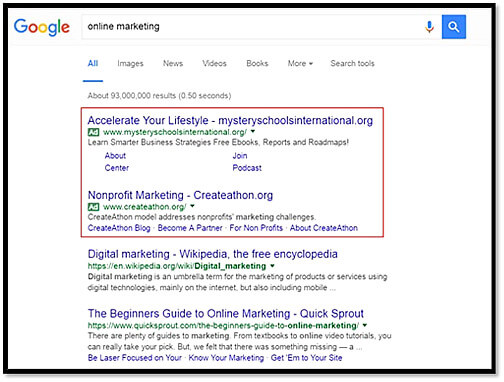
As you may well know, Google started to include paid ads on its search results pages a long time ago. Businesses can buy this real estate by competing in the bidding program based on keywords that Google calls AdWords. Through AdWords, you can select the keywords you want to target among those your target audience may be looking up on Google.
These ads go on top of the organic search results and have greater visibility in comparison.
Knowledge Graph Images
In branded search results, the item that is most seen and related to your business after your web content is the business profile image you’ll submit to your Google-My-Business profile. So, make sure you pick the image that effectively makes a positive image of your business in the eye of the searcher.
Since local searches are now becoming more important, it’s important to know you shouldn’t use your business logo as the profile image for GMB. Instead, use a close-cropped, high quality image of happy customers with yourself (for example).
Use this method for all the images you submit to your profile gallery and make sure they all look perfectly fine on desktop and mobile devices.
Google MY Business Profile
Your GMB profile, and the data you include in it, is all about accuracy. You can have significant positive impact from your GMB profile in terms of users’ directions requests for your business and website click-through rate, according to Google.
If you are a services business, Google will also let you add a website link to your services page or menu (in case you run a restaurant). Similarly, professionals and consultants can now add a link directly in the profile to request an appointment.
Google Posts
Google Posts is another immensely important tool that you can use to influence your branded results page on Google. You can add this as an add-on to your website dashboard and all you’ll need to do is add a great picture of yourself, a short 100-character intro, and a CTA.
You’re allowed 300 words per Google Post, out of which the initial 100 characters will appear on your GKP. So, you need to write the best 100 characters to begin your posts every time.
Google Reviews
Google Reviews is another sure-fire factor and instrument that will affect your overall image on Google, including the perspective it gives readers on your branded search page.
Google smartly includes a star-iconed summary of your overall Google reviews right under your business name. It also shows the number of reviews you got so the reader can better decide how reliable this information may be. A business with an average of 5 stars and 3 total reviews is definitely not as trustworthy as another with 200 reviews with an average of 4.6.
Done right, this tool can make visitors see you as an expert in your field. So, give your customers great service quality and constantly ask them to review your services on Google.
Go Mobile
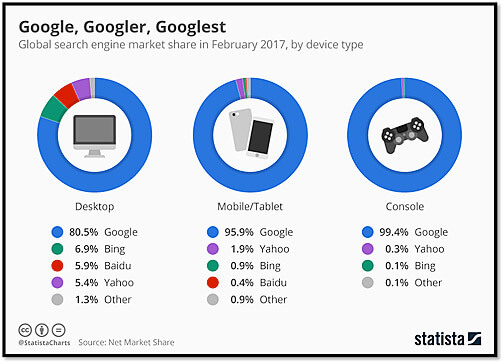
The good thing about investing time and effort in all these elements of the search results page is that it all works well for your mobile results.
Still, you should make sure your efforts are directed towards mobile friendly content just as much as – if not more than – desktop devices.
The reason for this shift is the way users are reaching Google now, as recently revealed by a Statista and Net Market Share report.
So! Understand how much of your branded Google results page you can actually influence. With all the information it has of your business, it’s time that you start giving Google the respect it deserves when it’s bringing you so much business without the User ever going to your website.
Owner and Chief Marketing Officer, Jason Hall, and his team specialize in creating brand awareness / traffic and lead generation / marketing funnel and conversion optimization, while utilizing the appropriate marketing channels available within your industry. With diverse clients throughout the world, Jason's team is well connected within many industries to assist with your marketing strategies. With no long term contracts and various levels of service, Jason's team will increase the quality of your online traffic, leads, and sales.
About the author...
Located in the heart of the Emerald Coast - Destin, FL, founder and Chief Marketing Officer, Jason Hall, and his team specialize in creating brand awareness / traffic and lead generation / marketing funnel and conversion optimization / and PR campaigns, while utilizing the appropriate marketing channels available within your industry.
With diverse clients throughout the world, Jason's team is well connected within many industries to assist with your marketing strategies. With no long term contracts and various levels of service, Jason's team will increase the quality of your online traffic, leads, and sales.




